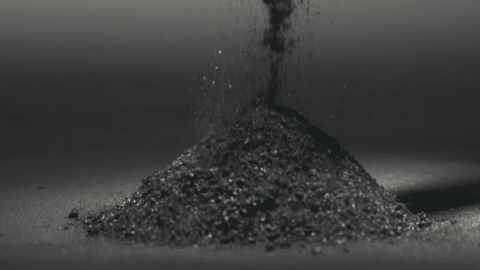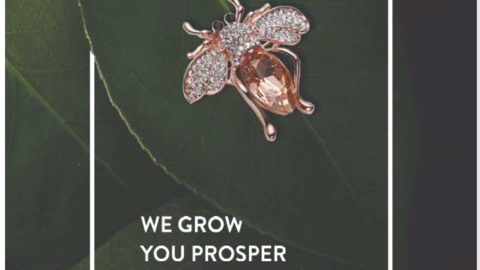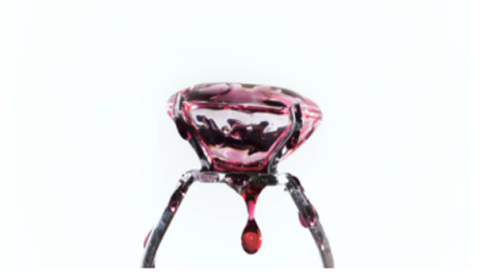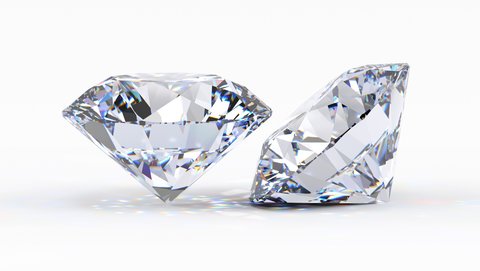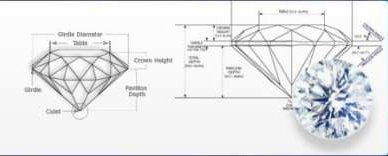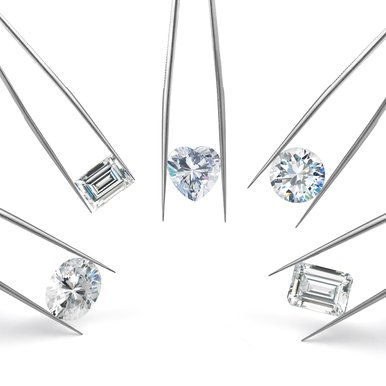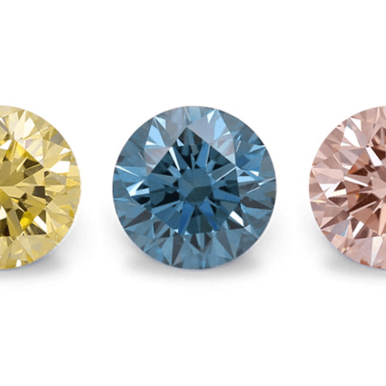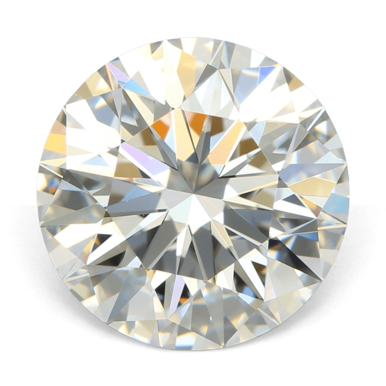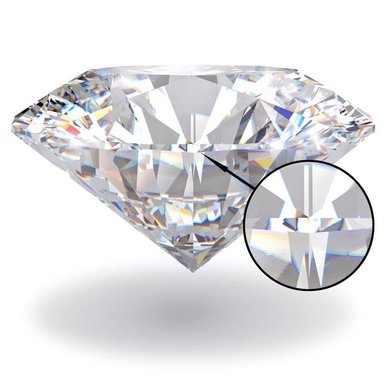
Baguette Cut Lab-Grown Diamonds: The Complete Guide
Baguette Cut Lab-Grown Diamonds
Baguette cut diamonds represent the perfect fusion of vintage elegance and modern sophistication in the world of fine jewelry. These distinctive rectangular gems, with their clean lines and geometric precision, offer a unique alternative to traditional brilliant cuts. Lab-grown baguette diamonds bring this timeless style into the sustainable future of jewelry, providing the same exceptional beauty and optical properties as their mined counterparts, but with significantly reduced environmental impact and often at a more accessible price point.
Whether you're considering accent stones for an engagement ring, planning an anniversary band, or designing a custom piece that makes a bold architectural statement, lab-grown baguette diamonds offer exceptional versatility and distinctive character. This guide will take you through everything you need to know about these elegant gems, from their fascinating history to practical buying advice for the conscious modern consumer.

What is a Baguette Cut Lab-Grown Diamond?
A baguette cut lab-grown diamond is a rectangular-shaped diamond with a step-cut faceting pattern, characterized by 14 facets arranged in parallel lines that create a "hall of mirrors" effect. The name "baguette" comes from the French word for "long stick" or "rod," perfectly describing its elongated rectangular shape. Unlike brilliant cuts that maximize sparkle, baguette cuts emphasize clarity and color with their clean, architectural lines.
Lab-grown baguette diamonds share identical physical, chemical, and optical properties with their mined counterparts, but are created in controlled laboratory environments using advanced technological processes that replicate the natural diamond-growing conditions. These diamonds belong to the step-cut family, alongside emerald and Asscher cuts, but feature fewer facets and typically maintain a longer, narrower proportion with a length-to-width ratio ranging from 3:1 to 5:1.
What distinguishes baguette cuts from other step cuts is their streamlined simplicity—they typically have straight edges rather than beveled corners, creating a pure rectangular form that provides exceptional versatility in jewelry design, particularly as accent stones that frame and enhance center gems.
History and Origin of the Baguette Cut
The baguette cut diamond emerged during the Art Deco period of the 1920s and 1930s, an era characterized by geometric designs, clean lines, and architectural influence. While step-cut diamonds date back to the 16th century, the specific baguette form gained popularity as designers sought shapes that complemented the bold, symmetrical aesthetic of the Art Deco movement.
The name "baguette" derives from the French term for a long, narrow loaf of bread, aptly describing the diamond's elongated rectangular shape. Initially, baguette diamonds were primarily used as accent stones, flanking larger center diamonds in engagement rings or arranged in channels to create streamlined bands.
Though they've experienced fluctuations in popularity over the decades, baguette diamonds have enjoyed a significant revival in recent years as modern designers rediscover their versatility and clean aesthetic. Lab-grown baguette diamonds represent the latest chapter in this cut's evolving history, bringing sustainable innovation to a classic design that has stood the test of time.
Key Characteristics of Baguette Lab-Grown Diamonds
a. Shape and Facet Structure
Baguette lab-grown diamonds feature a distinctive rectangular shape with a simple, elegant faceting pattern. With typically 14 facets (compared to the 57-58 facets of round brilliants), baguette diamonds possess a clean, streamlined appearance. Their length-to-width ratios generally range from 3:1 to 5:1, creating that characteristic elongated look. While standard baguettes have perfectly straight sides and 90-degree corners, tapered baguettes feature slightly angled sides that narrow at one end, allowing for curved designs and custom fits in jewelry settings.
b. Cut Quality
The quality of a baguette cut is particularly important due to its minimal faceting. With fewer facets to create light play, precision in cutting becomes crucial. In high-quality lab-grown baguette diamonds, symmetry must be perfect, with parallel facets that create clean, straight reflections. Table facets should be proportional, and depth percentages must be balanced for optimal light performance. Unlike brilliant cuts that can hide minor cutting flaws in their complex faceting, baguette cuts reveal any imperfections in their simple, clean lines.
c. Clarity
Clarity is especially important in baguette lab-grown diamonds. Their step-cut faceting and large, open table create a "window" effect that makes inclusions more visible than in brilliant cuts. For this reason, VS2 clarity or higher is typically recommended for baguette diamonds, particularly for larger stones. One advantage of lab-grown baguettes is that they often achieve higher clarity grades than mined diamonds, as the controlled growing environment minimizes inclusions and blemishes.
d. Color
Color is highly visible in baguette diamonds due to their step-cut nature. While brilliant cuts may mask slight coloration through light dispersion, baguettes showcase their true color more readily. For white diamonds, D-F color grades typically offer the best balance of value and appearance in lab-grown baguettes. One significant advantage of lab-grown diamonds is their color consistency, particularly important when multiple baguettes are used together in a single piece of jewelry.
e. Carat Weight
Baguette diamonds are typically measured by dimensions rather than carat weight alone. Due to their elongated shape, even relatively low-carat baguettes can appear substantial when properly proportioned. Lab-grown baguettes are commonly available in sizes ranging from tiny accent stones (0.05 carats) to larger pieces exceeding 1 carat. Their shallow depth compared to other cuts means they often appear larger face-up than their actual carat weight would suggest.
Baguette Cut Lab-Grown Diamond vs. Emerald Cut Lab-Grown Diamond
When considering step-cut lab-grown diamonds, the baguette and emerald cuts are often compared. While both share a similar lineage, they differ in several key aspects that affect their appearance, performance, and typical uses in jewelry.
Baguette Cut vs. Emerald Cut Lab-Grown Diamonds: A Comprehensive Comparison
| Feature | Lab-Grown Baguette Cut | Lab-Grown Emerald Cut |
|---|---|---|
| Facets | 14 | 50-58 |
| Shape | Long rectangular/tapered | More balanced rectangular |
| Corners | Square | Cut (beveled) |
| Brilliance | Subtle flash reflections | More depth and light play |
| Typical Use | Accent stones | Center or accent stones |
| Length-to-Width Ratio | 3:1 to 5:1 | 1.5:1 to 1.75:1 |
| Price Point | More affordable | Higher price per carat |
| Visibility of Inclusions | Very visible | Visible but less than baguette |

While emerald cuts offer more complex light play due to their additional facets and beveled corners, baguette cuts provide a cleaner, more minimalist aesthetic that works beautifully in modern designs. Lab-grown versions of both cuts offer significant sustainability advantages over their mined counterparts, with reduced environmental impact and ethical assurance.
Popular Uses and Settings for Lab-Grown Baguette Diamonds
Lab-grown baguette diamonds excel in a variety of jewelry settings, with their clean lines making them particularly versatile design elements. Their elongated shape creates visual continuity, making them ideal for specific settings:
Channel Settings: Baguette diamonds set edge-to-edge in a continuous channel create a seamless line of sparkle, perfect for eternity bands and wedding rings. The straight edges of baguettes align perfectly, creating an uninterrupted flow of diamonds.
Three-Stone Rings: As side stones flanking a center diamond, baguettes provide elegant contrast when paired with brilliant-cut or cushion-cut center stones. Their clean lines frame and enhance the center stone without competing for attention.
Vintage-Inspired Designs: Lab-grown baguettes are perfect for creating sustainable versions of Art Deco-inspired jewelry, offering geometric precision while reducing environmental impact compared to mined diamonds.
East-West Settings: Horizontally-set baguette diamonds make striking center stones in minimalist engagement rings, offering a contemporary alternative to traditional designs while maximizing the diamond's apparent size.
Ballerina Rings: In these dramatic settings, baguette diamonds radiate outward from a center stone like a ballet skirt, creating a dynamic, architectural effect that showcases the baguette's linear beauty.
How to Choose a Lab-Grown Baguette Diamond
When selecting the perfect lab-grown baguette diamond, several key factors deserve special attention:
Prioritize Clarity: Because of their step-cut faceting pattern, baguette diamonds act like windows—inclusions are more visible than in brilliant cuts. Aim for VS2 clarity or higher for the best appearance, especially for larger stones. Lab-grown diamonds often have an advantage here, as they tend to have fewer inclusions than mined diamonds.
Evaluate Symmetry: Perfect symmetry is crucial for baguette cuts. Look for straight, parallel facets and perfectly rectangular shapes (unless intentionally tapered). Even slight asymmetry will be noticeable in the clean lines of a baguette cut.
Consider Color Carefully: Due to minimal light dispersion, baguettes show their true color more than brilliant cuts. For white diamonds, G-H color grades typically offer the best value while still appearing colorless in most settings. For colored lab-grown diamonds, ensure consistent saturation throughout the stone.
Check Length-to-Width Ratio: The ideal ratio depends on your personal preference and the intended design. Traditional baguettes have ratios between 3:1 and 5:1, but consider how the proportions will work in your specific jewelry piece.
Examine in Different Lighting: Unlike brilliant cuts that sparkle in any light, baguettes show different characteristics under various lighting conditions. View potential purchases under both natural and artificial light to ensure you appreciate their unique flash.
Match with Complementary Shapes: If using multiple baguettes or pairing with other diamond shapes, ensure they complement each other in terms of color, clarity, and proportions.
Price Range and Value Considerations
Lab-grown baguette diamonds typically offer exceptional value compared to their mined counterparts. These sustainable alternatives generally cost 30-40% less than mined diamonds of equivalent quality, making them an attractive option for budget-conscious consumers who don't want to compromise on ethics or aesthetics.
Several factors influence the price of lab-grown baguette diamonds:
Size: While smaller accent baguettes (0.05-0.10 carats) may cost $100-300 per stone, larger baguette diamonds (0.50+ carats) can range from $700-2,000 depending on quality factors.
Quality Grades: As with all diamonds, higher clarity and color grades command premium prices. For baguettes, where clarity is particularly important, the price difference between VS and SI clarity grades can be significant.
Growth Method: CVD (Chemical Vapor Deposition) and HPHT (High Pressure High Temperature) methods produce slightly different characteristics, which can affect pricing. CVD-grown baguettes often achieve higher clarity grades, potentially affecting their value.
Setting Complexity: When purchasing baguette diamonds in finished jewelry, the complexity of the setting significantly influences the final price, with channel and pavé settings typically requiring more precise craftsmanship.
Overall, lab-grown baguette diamonds represent an excellent value proposition, offering the distinctive elegance of this classic cut with additional benefits of sustainability and ethical sourcing.
Where to Buy Lab-Grown Baguette Diamonds
Finding high-quality lab-grown baguette diamonds requires knowing where to look. They're not as commonly showcased as round or princess cuts, so it's important to know who specializes in sustainable lab-grown options:
Online Specialty Retailers: Labrilliante offers extensive selections of certified lab-grown baguette diamonds, with detailed specifications and high-resolution imagery to assess quality remotely.
Custom Jewelers: Many independent jewelers now work with lab-grown diamonds and can source baguette cuts for custom designs, offering personalized guidance throughout the selection process.
Traditional Retailers with Lab-Grown Options: Established jewelry chains increasingly offer lab-grown alternatives alongside their traditional diamond inventory, providing opportunities to compare options in person.
When purchasing, prioritize retailers that provide comprehensive certification from respected gemological laboratories (like IGI or GCAL), transparent sourcing information, and clear return policies. The best retailers will also educate you about the specific characteristics of baguette diamonds rather than treating them as simply another diamond shape.
Baguette Lab Grown Diamondss: Frequently Asked Questions
Yes, lab-grown baguette diamonds are chemically, physically, and optically identical to mined diamonds. They are real diamonds with the same carbon crystal structure, hardness, and brilliance - they simply form in controlled laboratory conditions rather than underground.
Lab-grown baguette diamonds typically cost 30-40% less than their mined counterparts of equivalent quality. A high-quality 0.50 carat lab-grown baguette might cost $400-800, while a comparable mined stone could be $1,000-2,000.
Yes, though less common than as accent stones, baguette diamonds can make distinctive center stones, especially in East-West settings (horizontally oriented) or stacked arrangements. Their unique linear shape creates a modern, architectural look that stands out from traditional center stone cuts.
Lab-grown baguette diamonds require significantly less energy and water consumption than mined diamonds, with no land disruption or habitat destruction. The carbon footprint of a lab-grown diamond is typically 4-5 times smaller than that of a mined diamond, making it a more sustainable choice.
Baguette diamonds typically appear more brilliant in white metals (white gold, platinum) that don't introduce color reflections. However, the contrast between colorless baguettes and yellow or rose gold creates a striking vintage aesthetic, particularly for Art Deco-inspired designs.
Properly set baguette diamonds should form a continuous line with perfectly aligned edges. Look for consistent spacing between stones, uniform color throughout, and a smooth surface level with the metal channel. Improperly set baguettes will show uneven heights or misaligned edges.
The clean, geometric lines of baguette diamonds offer masculine appeal that works well in men's bands and cufflinks. Lab-grown options make these designs more accessible price-wise while addressing ethical concerns, contributing to the growing trend of men embracing diamond jewelry.
No, standard jeweler's loupe or microscope cannot distinguish lab-grown from mined baguette diamonds. Only specialized equipment like spectroscopes can detect growth patterns unique to lab diamonds. This is why proper certification from laboratories like IGI or GCAL is essential for transparency.




